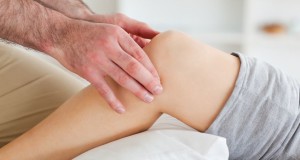Swimmer’s ear occurs when bacteria infects the outer ear and/or ear canal, a tube-shaped passageway that allows sound to reach the ear drum. Many people develop this condition while swimming, particularly in contaminated water. Warm water can foster bacterial grown even if the water is relatively clean. Sweat also provides a hospitable environment for bacteria.
Swimmer’s ear can also develop outside the pool. One can inadvertently damage their delicate ear lining while cleaning them with cotton swabs or their fingers, allowing harmful bacteria to seep into the damaged tissues. Objects that become lodged in the ear may also bring about a swimmer’s ear infection, as can hair sprays and hair dyes that wind up on the ear.
Individuals first experience feelings of fullness in the ear. The infected ear may also start to itch. Ear canal swelling and draining appear as the bacteria take hold, and the patient is in a considerable amount of pain. Swelling may cause the canal itself to close, and the surrounding facial tissues also begin to swell. Temporary hearing loss and lymph node enlargement can occur, which can make opening the jaw a painful endeavor.
Treating Swimmer’s Ear
Ear drops are the typically the first line of treatment for swimmer’s ear, which may include antibiotics, steroids, acidic solutions and anti-fungal medications. The exact mixture depends on the nature of the patient’s condition. Patients generally take such medications for a period of 10 to 14 days. If swelling prevents the drops from fully entering the ear, a small device known as a wick may be used to clear a path through the canal. If necessary, the patient may also be prescribed oral medications and corticosteroids. Common over-the-counter drugs, such as ibuprofen or acetaminophen, can also be added to the treatment of this condition.
Since discharge, skin flakes, earwax and other assorted debris can also block ear drops, a doctor may need to remove such obstacles with a small suction device. An infected ear should not be scratched or cleaned with a cotton swab, since both can worsen the ear’s condition. The patient will also need to wear ear plugs while showering or swimming to prevent creation of new bacteria.
Swimming Safely
As with many other bacterial infections, swimmer’s ear can be avoided by sticking to some basic guidelines:
Tread Carefully Near Your Ears –Cotton swabs can easily push wax deeper into the ear, which can have the domino effect of tearing skin inside the ear canal. Torn skin can act as a gateway for bacteria. Most medical professionals discourage patients from using cotton swabs in the ear canal. Instead, try gently cleaning the outer part of the ear with a washcloth.
Stay Alert – It is not uncommon for bacteria to contaminate water along popular beaches. Health officials issue “no-swimming” advisories, which warn beach-goers about the possible risk of infection. Stay on guard for these alerts, and follow them accordingly.
Put in Ear Plugs Before Swimming – Wearing earplugs while taking a dip might feel strange, but doing so blocks water from entering the ear canal.
Stay Dry –By thoroughly drying your ears, you can prevent the spread and growth of harmful microbes. The Centers for Disease Control and Prevention (CDC) recommends using a towel for this task. Removing water from the ear canal can be done by tugging your earlobe in various directions while tilting your ear towards the ground.
If you still can’t get your ears sufficiently dry, the CDC suggests that a hair dryer might offer a possible solution. Make sure to position this device several inches away from your ear, and to keep it on its lowest possible heat and speed settings. Again, cotton swabs in the ear canal are not a recommended remedy.
Use an Alcohol/White Vinegar Mix –Surprising as that might sound; it’s actually true – mixing one drop of white vinegar with one drop of alcohol can do a number on bacteria. Carefully pour this remedy into your ears before letting it drain back out.
Keep Hair Products on Your Hair – Hair sprays and dyes can be bad news for your ears if your aim is off. You might consider carefully shielding your ears with cotton balls
 Natural Knowledge 24/7 Educate yourself with nutrition, health and fitness knowledge.
Natural Knowledge 24/7 Educate yourself with nutrition, health and fitness knowledge.






